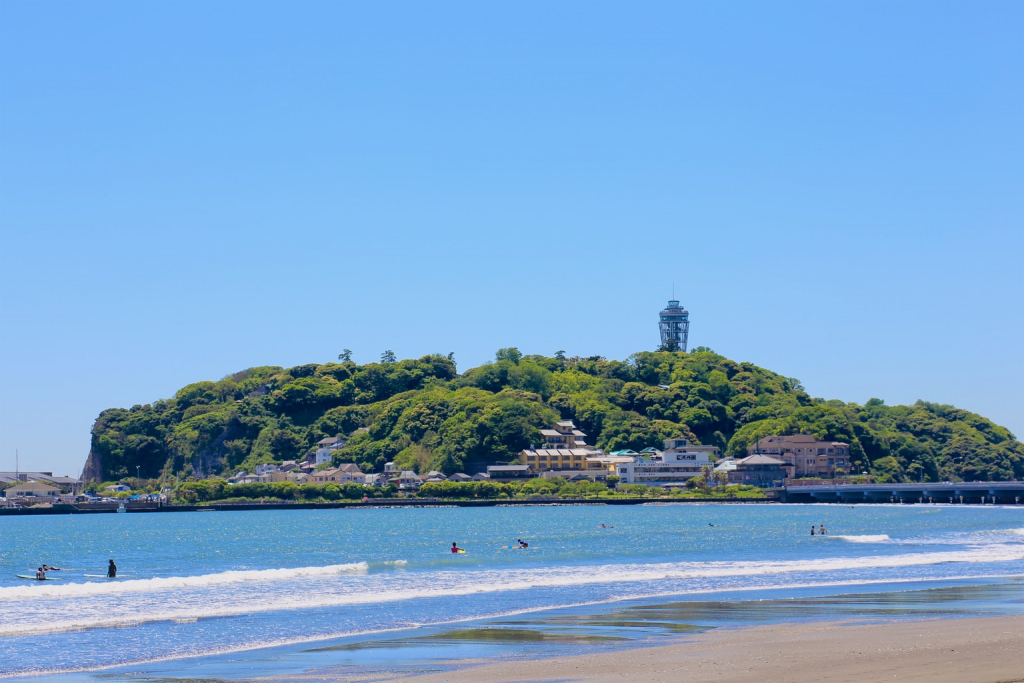If you’re craving an island getaway but have a limited time and budget to spend, your solution may be close at hand. For centuries, Enoshima was historically an important destination for religious pilgrims but has more recently become known as a place where the weary Kanto residents can take a break from the demands of daily life.
The island vibe is ever-present from the moment you arrive in the Enoshima area. “Ono-licious” Hawaiian restaurants like L&L Barbeque and Eggs ‘n Things have locations here, colorful murals greet you with “Aloha”, and signs playfully inform passersby that “Surfs Up.” While Enoshima is a popular place to people-watch during the summer, autumn and winter offer the opportunity to enjoy the sand and surf without the crowds.
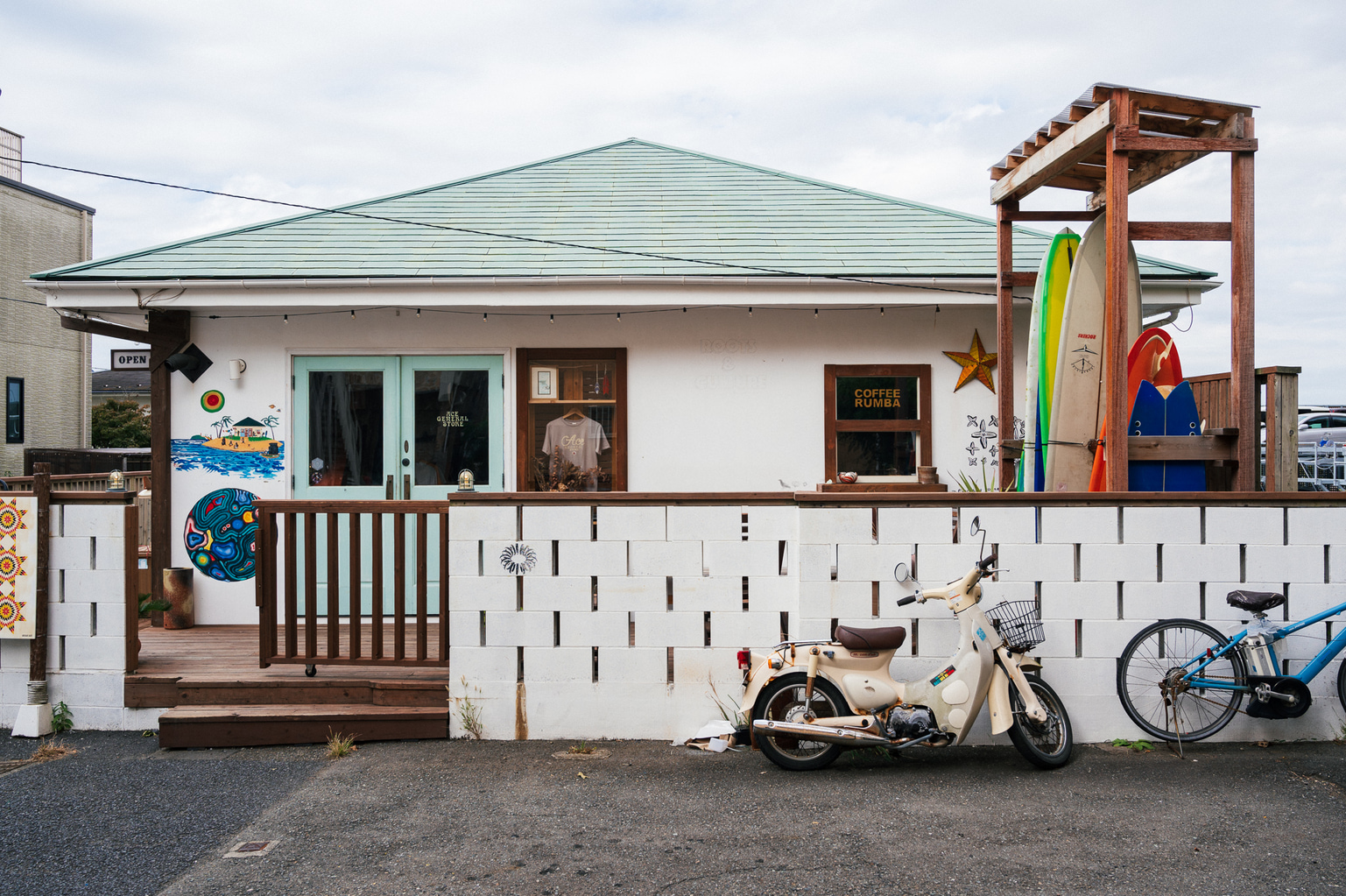
Enoshima has its own special atmosphere as well. The area’s history goes back nearly 1,500 years when legend has it that the island appeared in Sagami Bay accompanied by the goddess Benzaiten. “The Legend of the Goddess and the 5-Headed Dragon” is memorialized in many locations around the island, referring to the legend of the great five-headed dragon Gozuryu, who fell in love with Benzaiten, changing his ways from terrorizing to protecting Enoshima.
Most people come to Enoshima as a day trip, but a single day is not enough to enjoy all the area has to offer. By spending the night, you can take in the sights at a leisurely pace.
To get the best value for your money, purchase the one-day Enopass, which grants you unlimited free admissions to the Enoshima Sea Candle, Enoshima Samuel Cocking Garden, Enoshima Iwaya Caves and the various “Escar” escalators around the island that take you to the higher elevations (trust me, your feet will thank you for using them). You can purchase the Enopass at the Fujisawa City Tourist Center, in front of Katase-Enoshima West Beach before crossing the bridge to the island. While you are there, “Like” the Discover Fujisawa Facebook page and they’ll present you with a free gift!
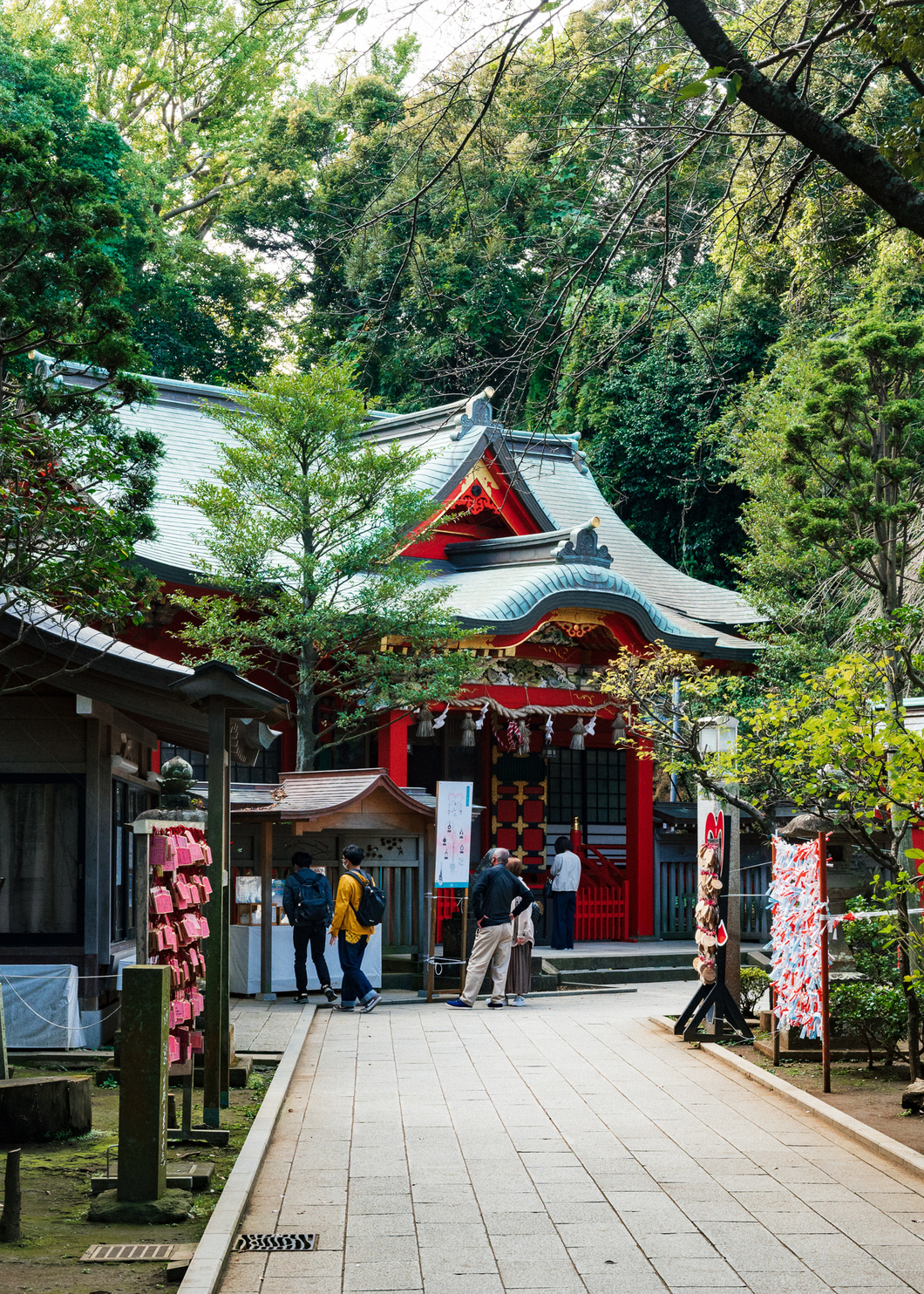
The Enoshima Shrine refers to three separate shrines located around the island: Hetsumiya, Nakatsumiya, Okutsumiya. The shrines were built on Enoshima Island between 800 and 1,200 years ago, though they have been rebuilt and renovated several times. As you make a circuit around the island, you can visit each shrine and other Buddhist and Shinto points of interest.
Be sure you head down to the ocean’s edge to Chigogafuchi, which on a clear day, boasts one of Kanagawa Prefecture’s best views of Mt. Fuji across Sagami Bay. From there, go deep into the Iwaya Caves, which once attracted thousands of curious pilgrims of the Benzaiten faith.
Atop the island, the Enoshima Samuel Cocking Garden surrounds the elegant Enoshima Sea Candle, a lighthouse observation tower with a panoramic view of the Sagami Bay area. Apart from the ever-changing variety of seasonal flowers in the gardens, special events create breathtaking night views of the garden.
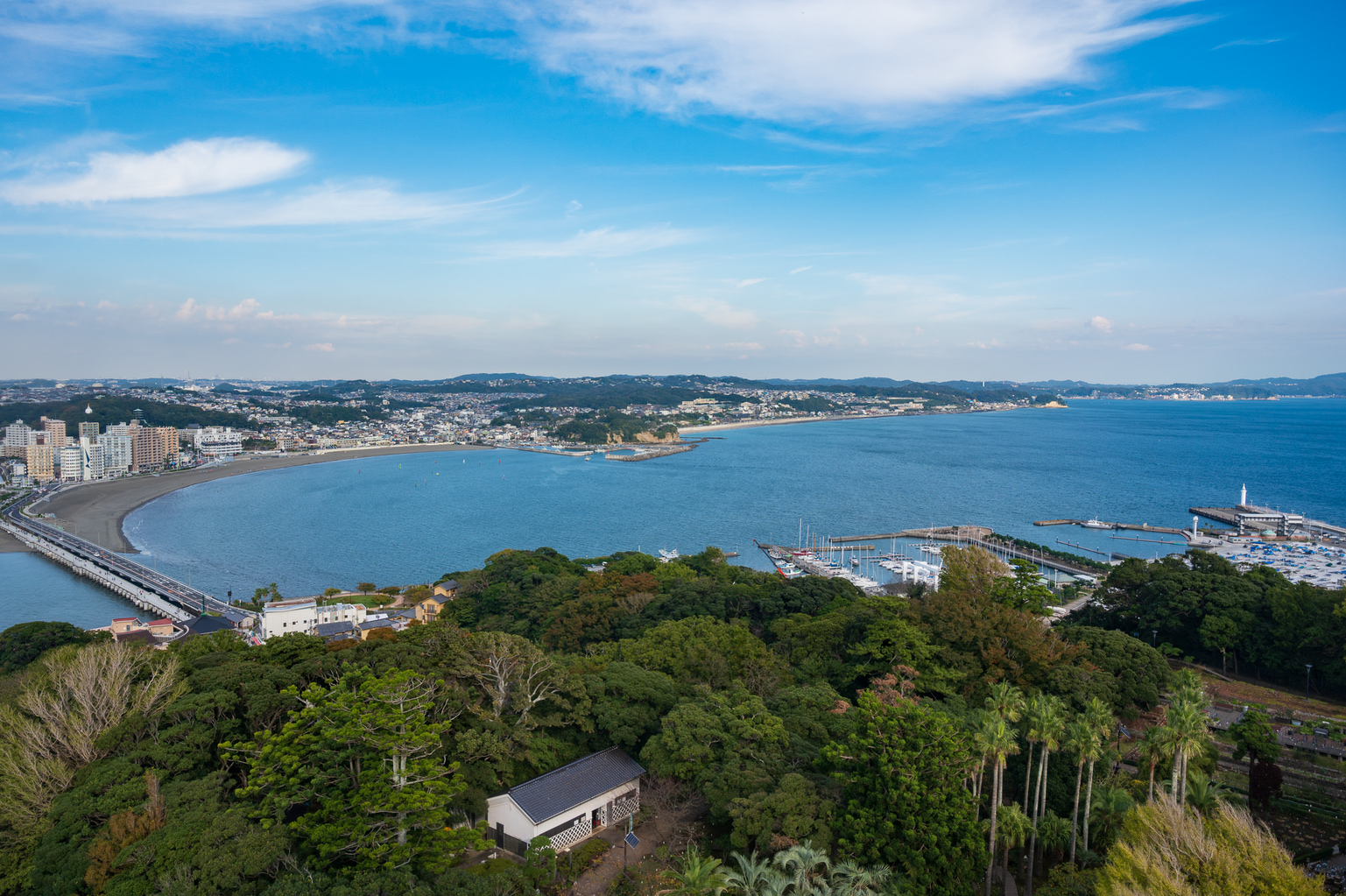
Browse the shops along Benzaiten Nakamise Street, leading from the great bronze “Seido no Torii” gate at the foot of the street to the Zuishinmon gate leading up the stairway to Hetsumiya Shrine. You’ll find a mix of traditional and modern shops perfect for souvenir shopping. When you work up an appetite, you’ll find many quaint local restaurants on the island, many serving the fresh catch of the resident fishermen.
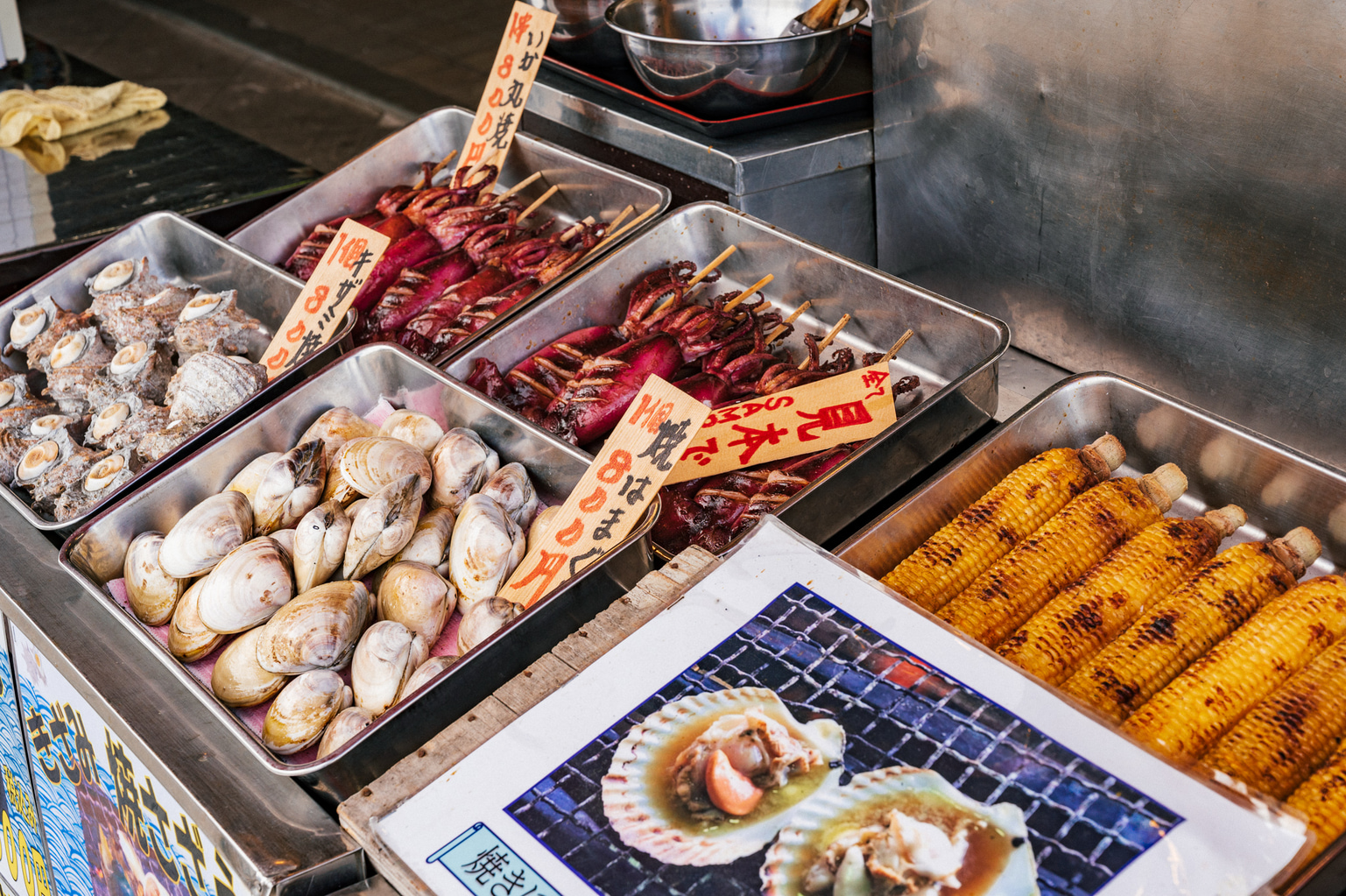
Just across the bridge from the island, the Enoshima Aquarium is an informative and entertaining place to spend part of your day. The aquarium displays a wide variety of sea life indigenous to Sagami Bay as well as special activities and shows (contents may change due to the Covid situation).
Your only options used to be Japanese style ryokan or minshuku if you wanted to spend the night on the island, but the island’s first hotel, the Enoshima Hotel, opened in May 2020. Conveniently located near the Enoshima Benten-bashi bridge, close to Nakamise Street, and adjacent to a variety of restaurants, each comfortable room has a view of Sagami Bay. During your stay, make sure to visit the spa’s swimming pool and healing hot springs baths located inside the Enoshima Hotel.
An overnight escape to Enoshima is well within reach, particularly during the weekdays when there are fewer visitors on the island compared to busy weekends, and you’ll find an unrushed, uncrowded atmosphere there. There are three convenient train lines to Enoshima, including the speedy Odakyu Romance Car, which delivers you in comfort from Shinjuku station in just over an hour.
Enoshima Events of the Four Seasons
Enoshima has a wide variety of events throughout the year and they are undoubtedly a good way to enjoy the area. However, due to Covid-19, please note it is possible for schedules to change. Before heading out, make sure to check the latest information on the event websites.
Spring
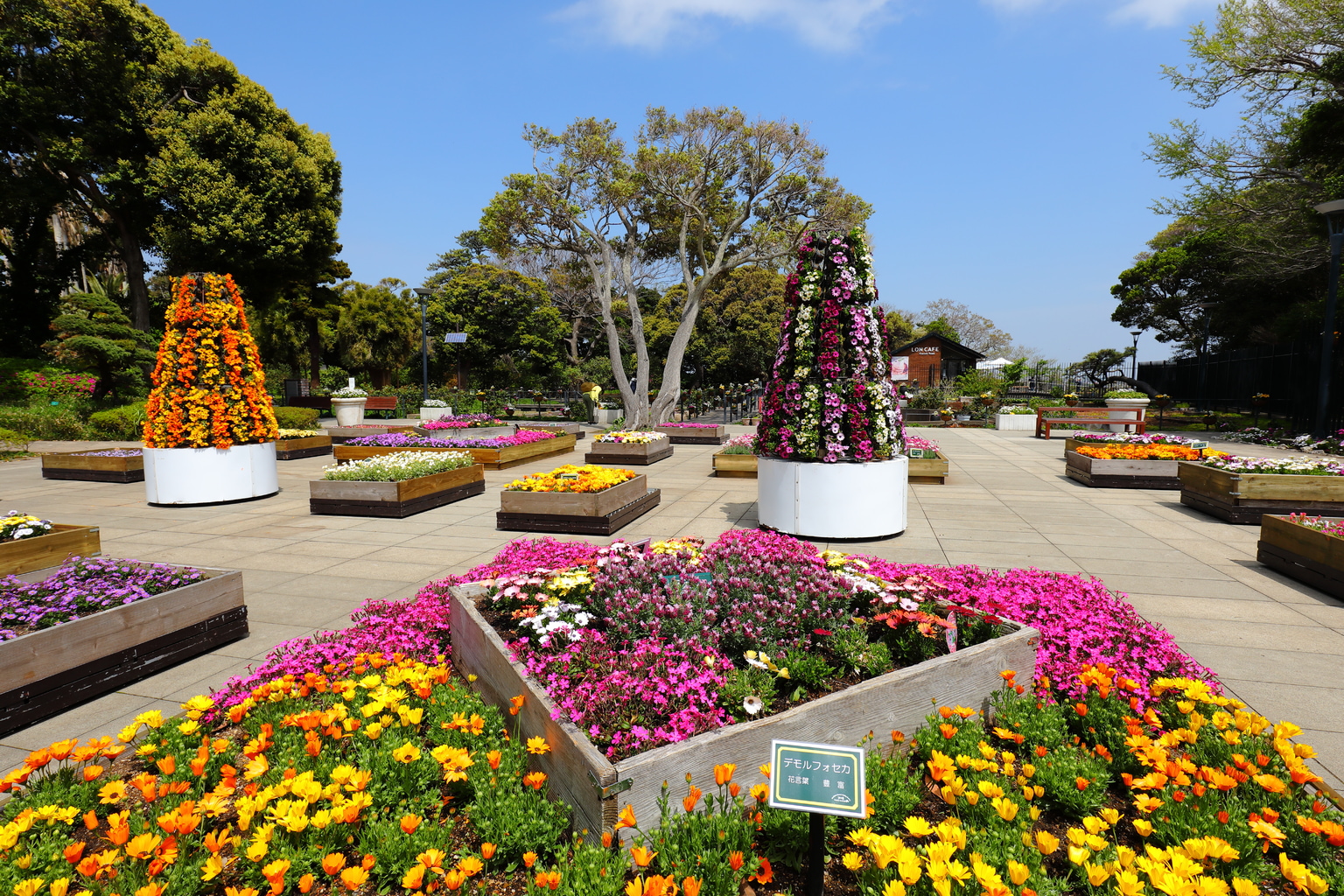
Provided by Fujisawa City Tourist Association
The Flower
The Enoshima Samuel Cocking Garden was established in 1862 by the English merchant Samuel Cocking. The garden has European and Japanese influences and includes South Pacific plants that Cocking brought with him as well as endemic Japanese plants.
The event “The Flower” is held in the garden between April 24th and May 31st. During this time you can enjoy a special display of flowers that bloom in spring and early summer, take a picture at the “botanical” photo spot, admire the blooming of the beautiful roses that were gifted from Windsor City in Canada, and visit the remains of Cockings’s greenhouse that are opened for a special exhibition.
For more information on this event, visit this website.

Provided by Fujisawa City Tourist Association
Mirrorbowler Light Art: Spring Evening
Mirrorbowler is an art group that was founded in 2000 and is comprised of graphic designers, photographers, artists, lighting technicians, and so on. They create installations with mirror balls to create art with light and reflections. Their new art space “Light Art: Spring Evening” can be admired at the Samuel Cocking Garden between April 24th and May 9th.
Summer

Provided by Fujisawa City Tourist Association
Enoshima Lantern Festival
The Enoshima Lantern Festival takes place during the whole month of August. Every evening from 6 pm several places on the island are illuminated by the light of around 1,000 lanterns, creating a special atmosphere. The lanterns differ depending on the area, inviting the visitor to explore the various night views.
Held throughout August. Read more information about the festival here.
Sea bathing
Close to Enoshima are some beaches where you can take a swim in the ocean. Kugenuma and Katase Nishihama beaches are two popular spots. Here you can go swimming from early July to late August.
Autumn
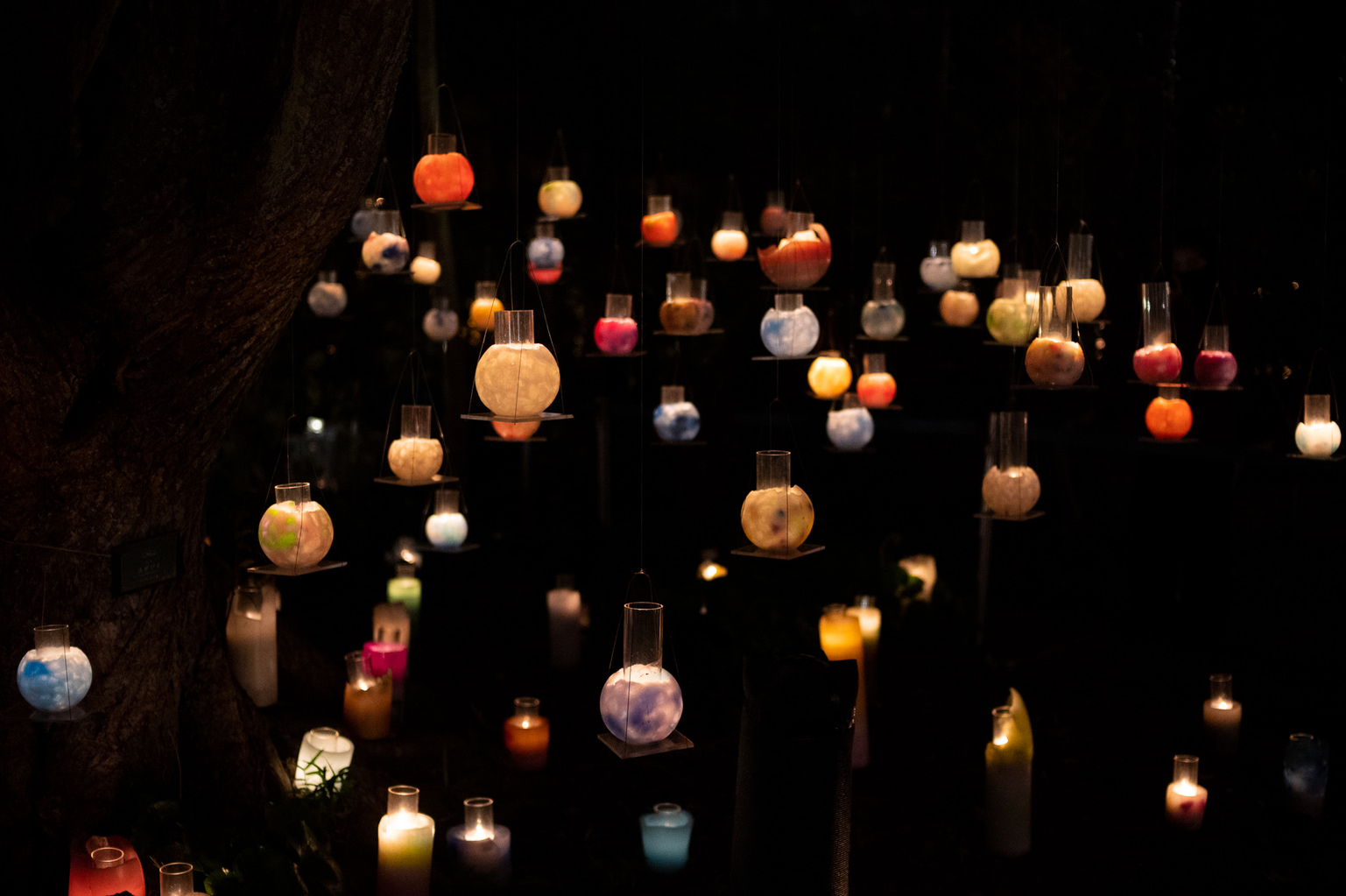
Shonan Candle Festival
The Shonan Candle Festival is held for 23 consecutive days in autumn. For this event around 10,000 real candles are lit every evening in the Samuel Cocking Garden creating a stunning sight. A large number of volunteers is necessary to light and extinguish the many candles.
Held around mid-October to early November. Read more information about the festival here.
Winter
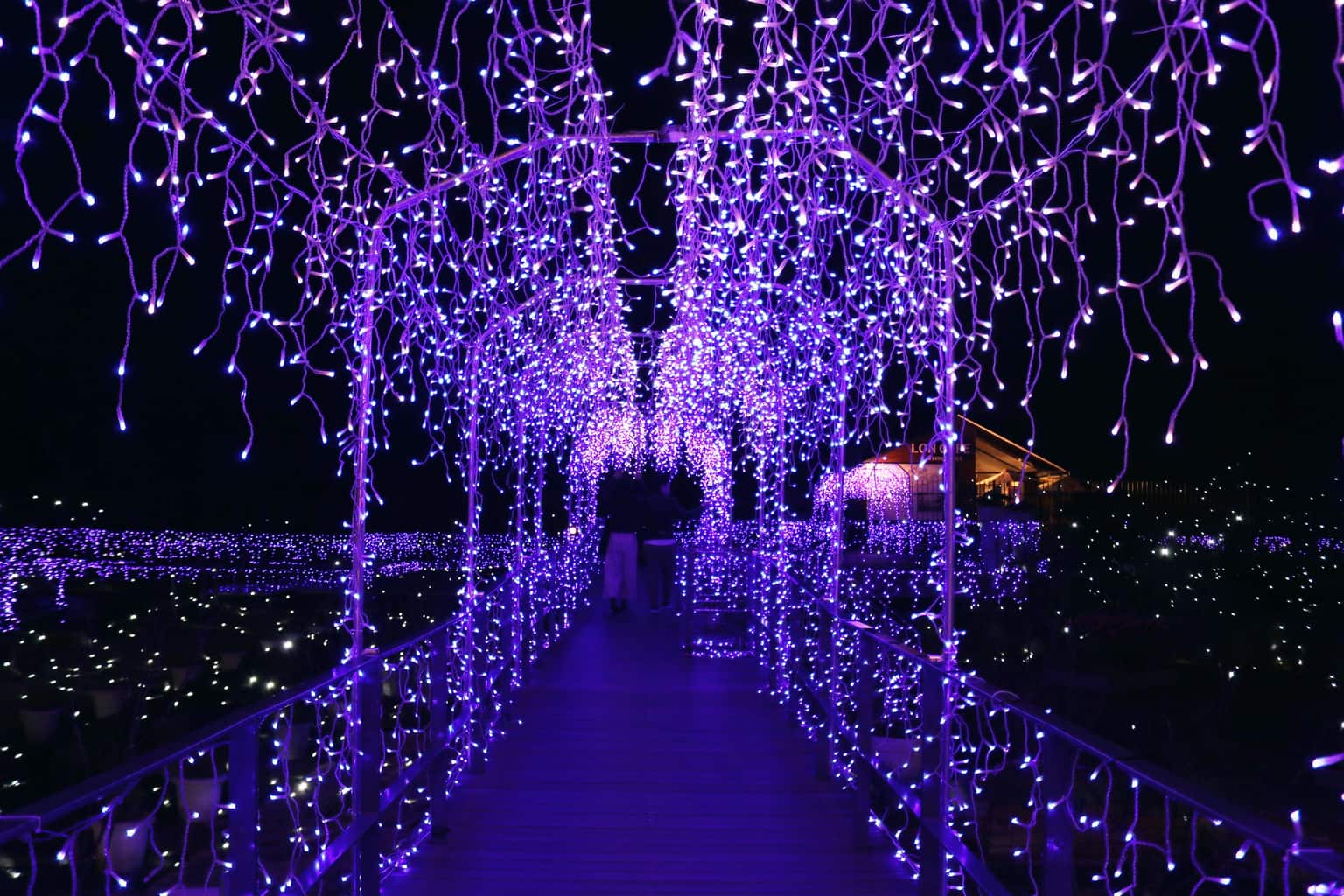
Photo by Maria Peñascal
Jewel of Shonan Winter Illumination
The Jewel of Shonan winter illumination is held since 1999, with its forerunner being the lighting up of the old Enoshima Observatory Lighthouse (now Enoshima Sea Candle). The event, created by the community as a whole, has always ranked high in many illumination rankings, including the three largest illuminations in the Kanto region, due to its unique design and its integration with the beautiful sea and sky.
Held from the end of November until mid-February. Read more information about the festival here.
All photos were taken by Todd Fong unless otherwise stated.
Sponsored Post

